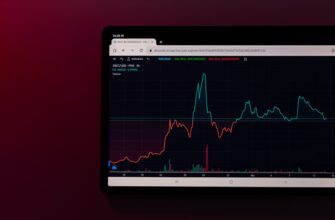- Why Day Trade Bitcoin on Kraken?
- The Power of Trading Bots for 5-Minute BTC Trading
- Setting Up Your Kraken Account for Bot Trading
- Choosing the Right Trading Bot for 5-Minute BTC Trades
- Crafting a Winning 5-Minute BTC Trading Strategy
- Risk Management: Protecting Your Capital
- Frequently Asked Questions (FAQ)
- Is 5-minute BTC trading profitable with bots?
- What’s the minimum capital needed?
- Can I use free trading bots?
- How do taxes work for bot trades?
Why Day Trade Bitcoin on Kraken?
Day trading Bitcoin (BTC) on Kraken offers a potent mix of high liquidity, competitive fees, and advanced trading tools. The 5-minute timeframe is particularly popular among crypto traders seeking rapid opportunities without overnight exposure. Kraken’s robust API support enables seamless bot integration, allowing you to execute precise strategies while capitalizing on BTC’s volatility. With 24/7 markets and deep order books, Kraken provides the ideal ecosystem for high-frequency bot trading.
The Power of Trading Bots for 5-Minute BTC Trading
Automated bots transform 5-minute BTC trading by eliminating emotional decisions and enabling split-second execution. Key advantages include:
- Speed & Precision: Execute trades in milliseconds when price patterns emerge
- 24/7 Operation: Capitalize on opportunities while you sleep
- Backtesting Capabilities: Test strategies against historical Kraken BTC data
- Multi-Strategy Execution: Run simultaneous approaches across pairs
Setting Up Your Kraken Account for Bot Trading
Follow these steps to prepare your Kraken account:
- Enable API Key Access in Account Settings
- Generate keys with “Trade” and “Query Funds” permissions (NEVER share private keys)
- Fund your account with USD or stablecoins like USDT
- Install Kraken Pro for advanced charting tools
- Start with a demo account to test bot configurations
Choosing the Right Trading Bot for 5-Minute BTC Trades
Select bots compatible with Kraken’s API and optimized for short timeframes:
- Grid Bots: Ideal for range-bound markets (e.g., $60k-$62k BTC)
- Arbitrage Bots: Exploit tiny price differences across pairs
- DCA Bots: Automate dollar-cost averaging during dips
- Custom Script Bots: Code your own strategies in Python or JavaScript
Top platforms: 3Commas, HaasOnline, and Kryll.io offer Kraken integration.
Crafting a Winning 5-Minute BTC Trading Strategy
Effective 5-minute strategies combine technical indicators with Kraken’s real-time data:
- Indicator Combo: Use 9 EMA + RSI (70/30 thresholds) for entry/exit signals
- Volume Spikes: Configure bots to buy when volume exceeds 20% of 4-hour average
- Breakout Tactics: Set limit orders 0.5% above key resistance levels
- News Triggers: Integrate crypto news APIs for event-based trades
Backtest parameters using TradingView’s Kraken BTC/USD charts before live deployment.
Risk Management: Protecting Your Capital
Survive volatility with these non-negotiable rules:
- Allocate ≤2% of capital per trade
- Set stop-losses at 1.5x the 5-minute ATR (Average True Range)
- Enable Kraken’s “Reduce-Only” orders to prevent position flipping
- Daily loss limit: 5% account balance
- Withdraw profits weekly to cold storage
Frequently Asked Questions (FAQ)
Is 5-minute BTC trading profitable with bots?
Yes, but profitability depends on strategy refinement, low Kraken fees (0.16%-0.26% maker/taker), and disciplined risk management. Most successful traders achieve 5-15% monthly returns after extensive backtesting.
What’s the minimum capital needed?
Start with $500-$1,000 to accommodate volatility and Kraken’s minimum trade sizes ($5 for BTC). This allows proper position sizing while limiting risk per trade.
Can I use free trading bots?
While open-source bots exist (e.g., Freqtrade), premium bots ($30-$100/month) offer superior Kraken integration, security, and strategy templates. Free trials are recommended before committing.
How do taxes work for bot trades?
Every Kraken trade generates a taxable event. Use crypto tax software like Koinly or CoinTracking that integrates with Kraken’s API for automated reporting. Consult a tax professional for jurisdiction-specific rules.








